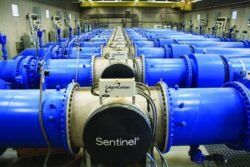
Sodium Hypochlorite Dosing Systems
Sodium Hypochlorite Dosing Systems: An In-depth Analysis
Sodium hypochlorite, commonly known as liquid bleach, is a versatile chemical with wide-ranging applications across various industries. One of its primary uses is in water treatment, where it serves as an effective disinfectant. To utilize sodium hypochlorite efficiently and safely, precise dosing systems are essential. This article delves deep into the intricacies of sodium hypochlorite dosing systems, examining their design, operation, applications, and the technological advances shaping their future.
1. Introduction to Sodium Hypochlorite
Sodium hypochlorite (NaOCl) is a pale yellow liquid with a strong chlorine odor, produced by reacting chlorine gas with a sodium hydroxide solution. The concentration of available chlorine in commercial sodium hypochlorite solutions typically ranges from 5% to 15%. Its disinfectant properties make it an invaluable resource in water treatment, sanitation, and bleaching.
2. Importance of Dosing Systems
The success of sodium hypochlorite in various applications largely depends on accurate dosing. Over-dosing can lead to safety hazards and increased costs, while under-dosing can result in ineffective disinfection. Therefore, a well-engineered dosing system is vital to ensure that the correct amount of chemical is delivered at the right time and place.
3. Components of Sodium Hypochlorite Dosing Systems
A typical sodium hypochlorite dosing system comprises several key components, each serving a specific function:
-
- Chemical Storage Tanks: These tanks store the sodium hypochlorite solution safely. They are usually made from materials resistant to corrosion, such as high-density polyethylene (HDPE) or fiberglass-reinforced plastic (FRP).
- Chemical Storage Tanks: These tanks store the sodium hypochlorite solution safely. They are usually made from materials resistant to corrosion, such as high-density polyethylene (HDPE) or fiberglass-reinforced plastic (FRP).
-
- Pumps: Dosing pumps are critical for moving the chemical from storage tanks to the point of application. They are typically peristaltic pumps, diaphragm pumps, or piston pumps, each selected based on the required pressure, flow rate, and chemical compatibility.
- Pumps: Dosing pumps are critical for moving the chemical from storage tanks to the point of application. They are typically peristaltic pumps, diaphragm pumps, or piston pumps, each selected based on the required pressure, flow rate, and chemical compatibility.
-
- Flow Meters: These devices measure the flow rate of the chemical being dosed, ensuring precise control over the quantity delivered.
- Flow Meters: These devices measure the flow rate of the chemical being dosed, ensuring precise control over the quantity delivered.
-
- Control Systems: Advanced control systems integrate sensors, software, and user interfaces to monitor and adjust dosing as per the specified requirements. They maintain optimal chemical concentrations by analyzing parameters like pH, ORP, and chlorine residuals.
- Control Systems: Advanced control systems integrate sensors, software, and user interfaces to monitor and adjust dosing as per the specified requirements. They maintain optimal chemical concentrations by analyzing parameters like pH, ORP, and chlorine residuals.
-
- Injection Points: These are designated locations where sodium hypochlorite is introduced into the process stream. Proper design and placement of injection points are crucial for effective mixing and reaction.
4. Design Considerations
Designing a sodium hypochlorite dosing system requires a comprehensive understanding of the process requirements and constraints. Factors to consider include:
-
- Concentration and Volume Requirements: The system must be capable of delivering the correct concentration and volume of sodium hypochlorite to achieve the desired disinfection levels.
- Concentration and Volume Requirements: The system must be capable of delivering the correct concentration and volume of sodium hypochlorite to achieve the desired disinfection levels.
-
- Chemical Compatibility: All components must be resistant to the corrosive nature of sodium hypochlorite. Corrosion-resistant materials and coatings are essential to extend the lifespan of the system.
- Chemical Compatibility: All components must be resistant to the corrosive nature of sodium hypochlorite. Corrosion-resistant materials and coatings are essential to extend the lifespan of the system.
-
- Safety Measures: Safety features such as spill containment, ventilation, and emergency shut-off systems are vital to protect personnel and equipment from chemical exposure and spills.
- Safety Measures: Safety features such as spill containment, ventilation, and emergency shut-off systems are vital to protect personnel and equipment from chemical exposure and spills.
-
- Automation and Control: Modern systems often incorporate automation to adjust dosing based on real-time data and predetermined parameters, enhancing both efficiency and safety.
5. Applications of Sodium Hypochlorite Dosing Systems
Sodium hypochlorite dosing systems find applications in several industries:
Water and Wastewater Treatment
In both municipal and industrial water treatment, sodium hypochlorite is used for disinfection and oxidation processes. Dosing systems ensure effective bacterial control, algae reduction, and removal of unwanted chemical compounds in potable water supplies. In wastewater treatment, it aids in controlling odors and reducing biological contaminants before discharge or reuse.
Food and Beverage Industry
In the food processing sector, maintaining hygiene is paramount. Sodium hypochlorite is utilized to disinfect equipment, surfaces, and water used in processing. Accurate dosing ensures that microbial contamination is minimized without leaving harmful residues.
Pulp and Paper Industry
Bleaching is a critical step in the paper manufacturing process. Sodium hypochlorite aids in removing lignin from pulp, yielding bright, high-quality paper. Precise dosing is essential to optimize the bleaching process while minimizing chemical usage and environmental impact.
Textile Industry
In textile processing, sodium hypochlorite is used to bleach fabrics and ensure consistent coloring. Proper dosing is crucial to achieving the desired level of whiteness while preserving the integrity of the fibers.
6. Technological Advances
Advancements in technology have significantly enhanced the efficiency and reliability of sodium hypochlorite dosing systems. Key developments include:
-
- Smart Dosing Systems: Leveraging IoT (Internet of Things) technology and sensors, smart dosing systems provide real-time monitoring and control, allowing operators to make data-driven decisions. They offer predictive maintenance alerts, reducing downtime and operational costs.
- Smart Dosing Systems: Leveraging IoT (Internet of Things) technology and sensors, smart dosing systems provide real-time monitoring and control, allowing operators to make data-driven decisions. They offer predictive maintenance alerts, reducing downtime and operational costs.
-
- Automated Calibration: Modern systems feature automated calibration functions, ensuring that dosing accuracy is maintained without requiring frequent manual intervention.
- Automated Calibration: Modern systems feature automated calibration functions, ensuring that dosing accuracy is maintained without requiring frequent manual intervention.
-
- Remote Monitoring and Control: Operators can now manage and adjust dosing parameters remotely, enhancing operational flexibility and response times.
- Remote Monitoring and Control: Operators can now manage and adjust dosing parameters remotely, enhancing operational flexibility and response times.
-
- Enhanced Materials: The development of more resistant and durable materials extends the lifespan of system components, reducing maintenance needs and overall cost of ownership.
7. Challenges in Sodium Hypochlorite Dosing
Despite technological advances, there remain challenges associated with sodium hypochlorite dosing systems:
-
- Degradation and Stability: Sodium hypochlorite solutions degrade over time, particularly when exposed to sunlight, heat, or metal contamination. This can affect the efficacy of dosing systems and requires careful storage and handling practices.
- Degradation and Stability: Sodium hypochlorite solutions degrade over time, particularly when exposed to sunlight, heat, or metal contamination. This can affect the efficacy of dosing systems and requires careful storage and handling practices.
-
- Gas Evolution: Sodium hypochlorite can release chlorine gas, posing health risks and potential damage to equipment. Proper system design must mitigate this risk through adequate ventilation and gas detection systems.
- Gas Evolution: Sodium hypochlorite can release chlorine gas, posing health risks and potential damage to equipment. Proper system design must mitigate this risk through adequate ventilation and gas detection systems.
-
- Environmental Concerns: Disposal of sodium hypochlorite must be managed properly to avoid environmental contamination. Dosing systems must be designed to minimize chemical usage and waste production.
8. Best Practices in Operating Dosing Systems
To maximize efficiency and safety, operators should adhere to the following best practices:
-
- Regular Maintenance: Routine inspection and maintenance of all system components is essential to ensure longevity and performance.
- Regular Maintenance: Routine inspection and maintenance of all system components is essential to ensure longevity and performance.
-
- Training and Safety Protocols: Personnel should be adequately trained in handling sodium hypochlorite and operating dosing systems safely. Comprehensive safety protocols must be in place and regularly updated.
- Training and Safety Protocols: Personnel should be adequately trained in handling sodium hypochlorite and operating dosing systems safely. Comprehensive safety protocols must be in place and regularly updated.
-
- Monitoring and Reporting: Continuous monitoring and data logging help in optimizing dosing strategies and identifying areas for improvement. Regular reporting ensures compliance with regulatory requirements.
9. Future Outlook
The future of sodium hypochlorite dosing systems is likely to be driven by continued advancements in automation, materials science, and environmental sustainability. Integration with digital twin technology, where virtual models simulate dosing scenarios, could further optimize performance and adaptability.
10. Conclusion
Sodium hypochlorite dosing systems are indispensable tools in ensuring safe and effective chemical applications across multiple industries. As technology evolves, these systems will become more precise, reliable, and environmentally friendly, underscoring their critical role in industrial processes and public health. By embracing modern advances and adhering to best practices, industries can harness the full potential of sodium hypochlorite, safeguarding operations and resources alike.

